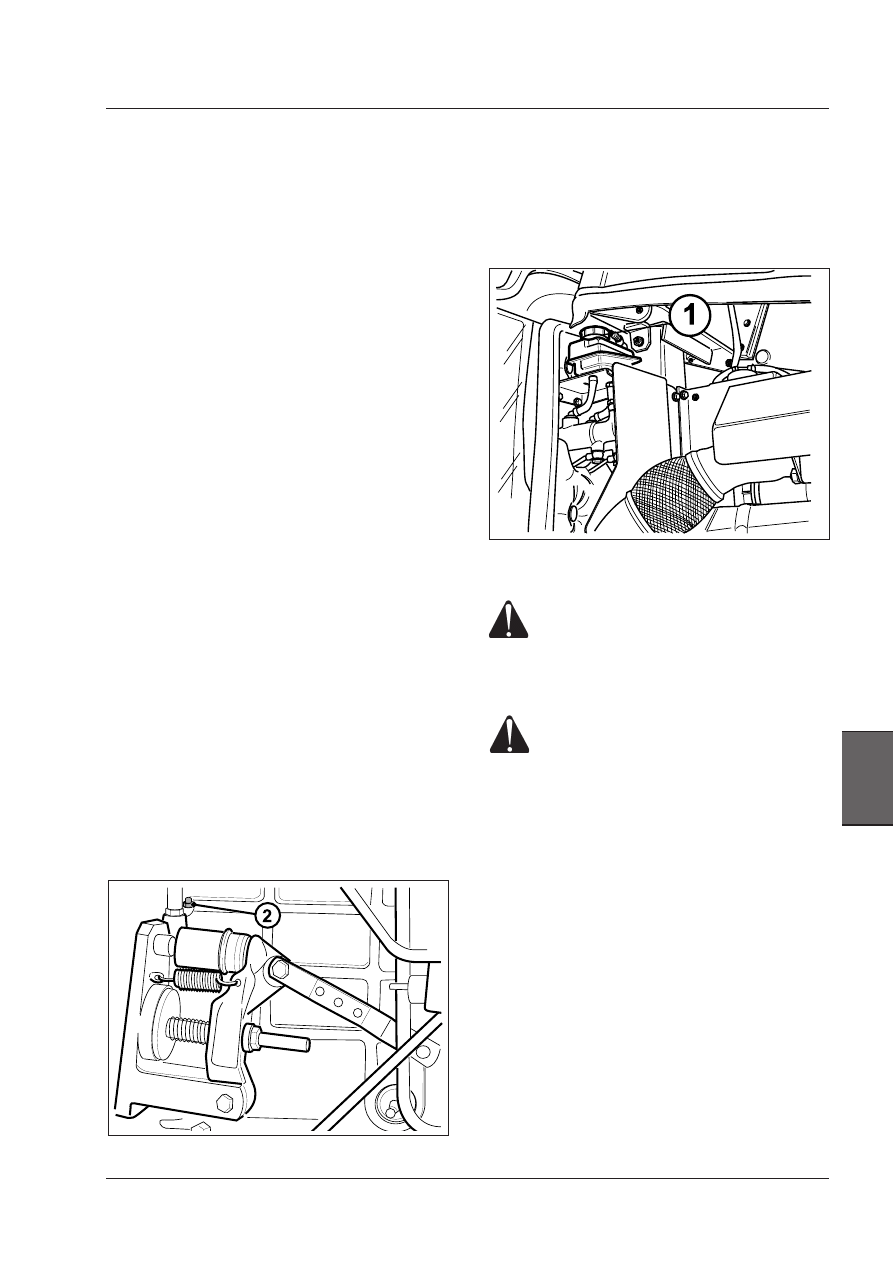Tractors X60 Series. Manual - part 55

219
Maintenance
7
9
GENERAL MAINTENANCE
Brakes
Bleeding the air from the rear brake
circuit
It becomes necessary to bleed the circuit when air enters
owing to lack of oil in the relative reservoir or when the
brake system is serviced.
This operation should be carried out by specialized per-
sonnel. If, however, you decide to do it yourself, proceed
in the following way.
1 - Make sure that the reservoir (1) is full.
2 - Thoroughly clean the area around the bleed screw.
3 - Fully depress the left-hand brake pedal.
Meanwhile, unscrew the bleed screw (2) a half-turn
and allow any air and oil to flow out. Re-tighten the
bleed screw and release the pedal.
4 - Repeat this operation until bubble-free oil flows from
the bleed screw.
5 - Make sure that the clutch pedal travel is firm and not
spongy.
6 - Carry out the operations described above for the
right-hand brake pedal.
7 - On completion of bleeding, top up the fluid level in
the reservoir (1).
NOTE: Never reuse previously bled oil without having
first filtered it.
CAUTION: If you need to open the bonnet, follow the procedure indicated under “How to open the bonnet”.
WARNING: Always use specific personal safety devices for each operation.
WARNING: Maintenance operations must be carried out with the engine off. Check that the gear and the par-
king brake are both engaged and that the ignition key has been removed.
WARNING: Beware of burns caused by hot tractor and engine parts.
[4.1.n]
WARNING: When changing or topping up the
brake fluid in the reservoir (1), be abso-
lutely sure to use the correct type of fluid as a
mineral-based oil is used on these machines.
Consult the Lubricant and Fuel chart for the
oil type.
WARNING: The oil in the brake circuits has
been studied to operate at a temperature of
100°C but only if not polluted by other sub-
stances, e.g. water in considerable quantities
will turn into vapour and prevent the braking
system from operating in the correct way.
Take the necessary precautions to prevent
water from penetrating into the system: pro-
tect the front axle and the components in the
braking system when the tractor is washed;
store oil in sheltered places where water
cannot infiltrate. If you think that there is
water in the braking system you must con-
tact your dealer’s specialized personnel and
have it removed. In this case, the rear brake
cylinders will have to be demounted and
emptied and particularly the brake housing
of the front axle which, being the lowest part
of the system, is the one most exposed to this
type of fault.